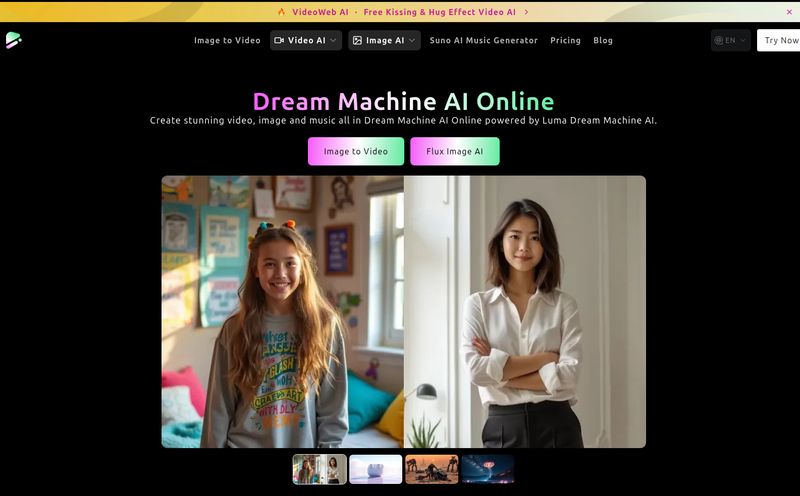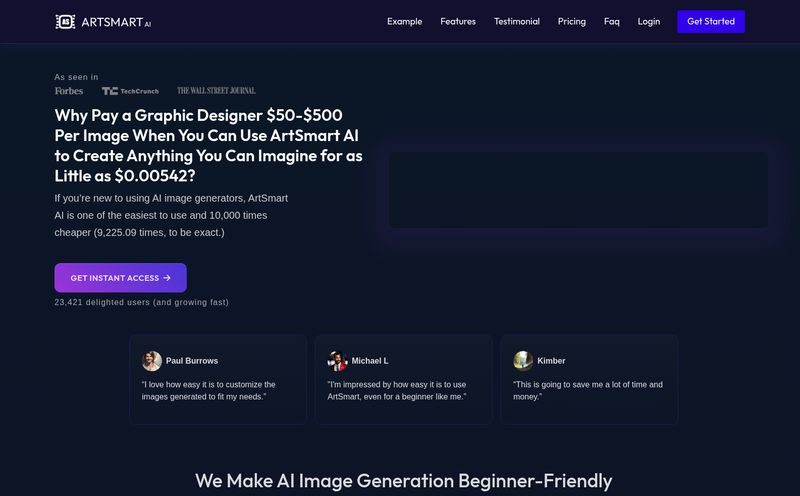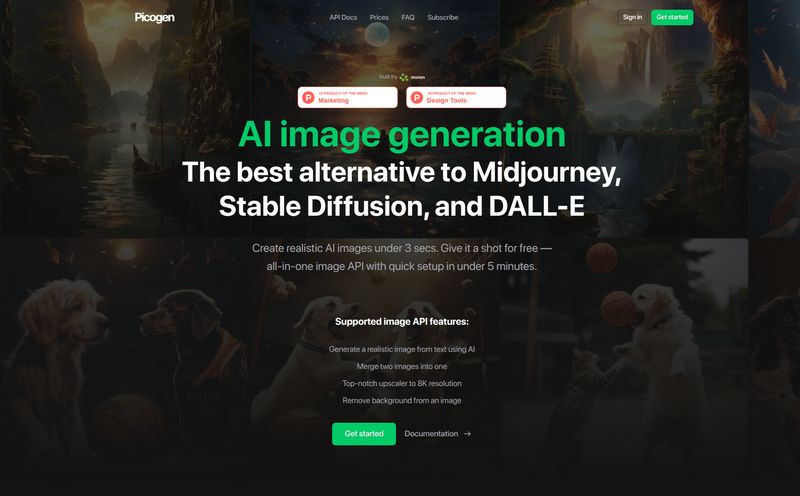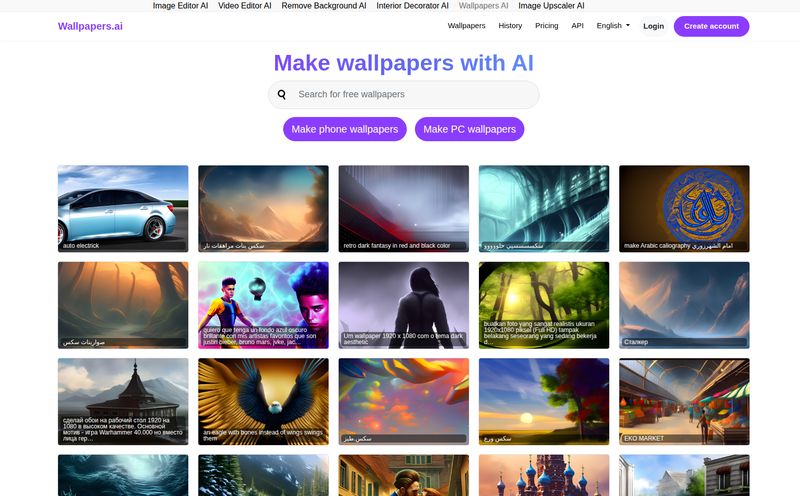We’ve all been there. You’ve got this brilliant idea for an image—a character, a scene, a logo—and it’s crystal clear in your head. You grab a pen, or maybe your Apple Pencil, and you sketch it out. And the result… well, it looks like something your toddler would proudly stick on the fridge. The spirit is there, but the execution? Lacking.
For years, that was the end of the road for most of my visual ideas. I’ve got folders of half-baked doodles on my iPad, and frankly, most of them are destined to gather digital dust. But the AI art scene has completely exploded, and with it, a whole new world of creative possibility. We've all seen the crazy stuff coming out of Midjourney and DALL-E from just a few words. But what if the starting point wasn't a text prompt, but one of those goofy doodles?
That’s the exact question a tool called SketchToImage (which I remember seeing back when it was called Scribble To Art) tries to answer. I’ve been playing around with it for a bit, and as someone who lives and breathes content creation and SEO, I’ve got some thoughts. Is it just another gimmick, or a genuinely useful tool for creators?
So, What's the Big Deal with SketchToImage?
At its heart, SketchToImage is an AI-powered web app that does exactly what the name implies. You feed it a sketch, and it spits out a polished piece of art. It’s not about writing the perfect, 300-word prompt to describe every shadow and whisker. It's about giving the AI a visual foundation—your sketch—and letting it run with it. Think of it less like a magic wand and more like a ridiculously talented intern who can mimic any style you ask for, but still needs a decent brief (your sketch) to get started.
You can either draw directly in their web canvas, which feels a bit like a simplified MS Paint, or upload an existing image. I found uploading a quick sketch from my tablet to be way more effective. You then pick a style, write a simple prompt to give it some context, and let the AI do its thing.
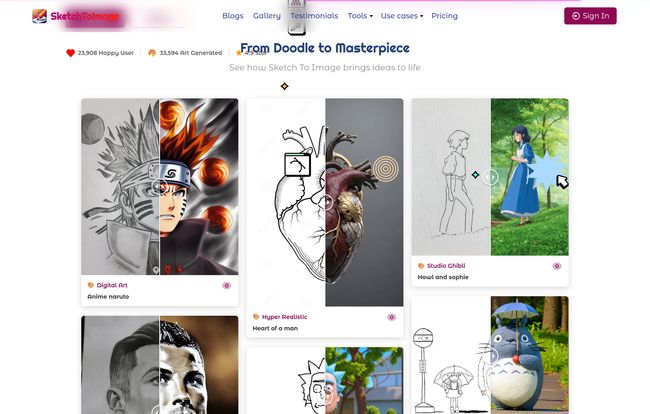
Visit SketchToImage
Getting Your Hands Dirty: The Core Features
I spent an afternoon turning some of my forgotten character sketches into something… usable. The process is pretty straightforward, but the results can be surprisingly cool. Here’s a breakdown of what it can do.
The Main Event: Sketch to Polished Image
This is the bread and butter. You upload your line art, pick a style like 'Anime', 'Realistic', 'Cinematic', or 'Digital Art', add a simple clarifying prompt like “man with glasses, blue shirt, confident smile,” and hit generate. In a few moments, you get a few variations based on your drawing.
Now, here’s the most important part: the quality of your output is heavily dependent on the quality of your input. The old “garbage in, garbage out” mantra applies. A messy, confusing scribble will yield a messy, confusing AI image. But a clean sketch with clear lines and defined shapes? That’s where the magic happens. I found my best results came from sketches that had decent anatomy and a clear silhouette. It’s a partnership, not a miracle worker.
Giving Your Art a Boost with Image Upscaling
The standard images generated are fine for web use, but what if you want to print a poster or use it as a high-resolution background? That’s where the upscaler comes in. You can take your favorite generation and increase its resolution up to 8x. This is a genuinely useful feature. So many AI tools spit out low-res images that look great on your phone but fall apart on a big screen. Having this built-in saves you from having to use a separate upscaling tool, which is a nice touch for workflow efficiency.
A Little Motion: The Image to Video Feature
This one intrigued me. SketchToImage can take a generated image and create a short, 2-second video from it. It adds subtle motion—a character might blink and shift their gaze, or the camera might pan slightly. It’s not going to replace a full animation suite, obviously. But for creating a little eye-catching movement for a social media post, an ad, or a website header? It’s a neat little bonus. It can make a static character portrait feel suddenly alive, which is pretty cool.
The Good, The Bad, and The Credit System
No tool is perfect, right? After using SketchToImage, a few things stood out—both good and not-so-good.
What I Really Liked
First off, the interface is dead simple. There's no learning curve. If you can upload a photo to Facebook, you can use this. The variety of art styles is also a huge plus, giving you a lot of creative range. But the absolute biggest win for me, as a content professional, is the licensing. The artwork you create is copyright-free. You can use it for commercial projects, blog posts, ads, whatever. In a world where AI image rights are a legal minefield, this clarity is a massive relief. I can't stress this enough.
The Sticking Points
The main drawback is the credit system. It’s not a simple “one generation = one credit” deal. Generating an image with their latest, highest-quality model (V2) costs more credits than using the older model (V1). Upscaling costs credits. Video generation costs even more credits. This means you have to be a bit strategic with how you use your monthly allowance. It can feel a bit like you’re at an arcade, constantly checking how many tokens you have left. I wish it were a bit more straightforward.
Let's Talk Money: The Pricing Plans
So how much does this creative partner cost? SketchToImage runs on a monthly subscription model based on credits. Here's a quick look at their plans.
| Plan | Price | Monthly Credits | What It Gets You (Roughly) |
|---|---|---|---|
| STANDARD | $20 / month | 220 | ~73 images (V2 Model) or 11 video generations. |
| PREMIUM | $30 / month | 350 | ~116 images (V2 Model) or 17 video generations. |
| ENTERPRISE | $55 / month | 700 | ~233 images (V2 Model) or 35 video generations. |
Note: The number of generations is an estimate, as different actions use different amounts of credits.
Is it worth it? For a professional designer, marketer, or content creator who needs unique visuals regularly, $20 or $30 a month is a drop in the bucket compared to stock photo subscriptions or hiring a freelance illustrator. For a hobbyist, it might feel a little steep, but it could be a fun monthly treat to bring your ideas to life.
Who Is This Tool Really For?
After my testing, I think SketchToImage hits a sweet spot for a few key groups:
- Concept Artists & Designers: Quickly iterate on ideas. See what a rough character sketch looks like in a photorealistic style without spending hours rendering it.
- Social Media Managers & Marketers: Need a constant stream of unique, eye-catching, and commercially-safe images for posts and ads? This is a fast way to generate them.
- Indie Game Developers & Storytellers: A fantastic tool for creating character portraits, environmental concepts, or storyboards on a budget.
- Hobbyists & Creative Souls: Anyone who loves to draw but lacks the technical skill to do digital painting. It’s a way to see the full potential of your ideas.
It’s probably not for someone looking for a one-click, perfect art generator that requires zero input or skill. It rewards good sketches and thoughtful prompts. It's a collaborator, not a replacement for creativity.
My Final Takeaway
I came into this a bit skeptical, and I’m leaving pleasantly surprised. SketchToImage isn't going to make you a world-class artist overnight, but it is an incredibly powerful and fun creative partner. Its unique approach of starting with a sketch gives you a level of control and personal touch that pure text-to-image generators often lack. Your final piece still has some of your own DNA in it.
The clear, copyright-free license is a massive selling point that shouldn’t be overlooked. While the credit system could be simpler, the overall value is there for anyone who needs to produce visuals regularly. If you have a folder of doodles just waiting for a chance to shine, I’d say it’s definitely worth a look.
Frequently Asked Questions
- Is the artwork I create with SketchToImage really copyright-free?
- Yes. According to their site, the artwork you generate is copyright-free and can be used for personal or commercial purposes. This is a huge advantage.
- Do I need to be a good artist to get good results?
- You don't need to be a professional, but cleaner, more defined sketches will produce better, more coherent results than very rough or messy scribbles.
- How does the credit system work?
- You buy a monthly plan which gives you a set number of credits. Different actions, like generating an image with the newer V2 model or creating a video, consume different amounts of credits. The V2 model costs 3 credits per image, while the classic V1 costs 1 credit.
- How long are the videos it creates?
- The image-to-video feature creates very short, 2-second animated clips with subtle motion.
- Can I just type in a prompt without a sketch?
- The main workflow is built around transforming a sketch. The prompt serves to refine and add detail to the visual information you provide with your drawing, not replace it entirely.
Reference and Sources
- SketchToImage Official Website
- SketchToImage Pricing Page
- Product Hunt - Design Tools (As seen on their site)
